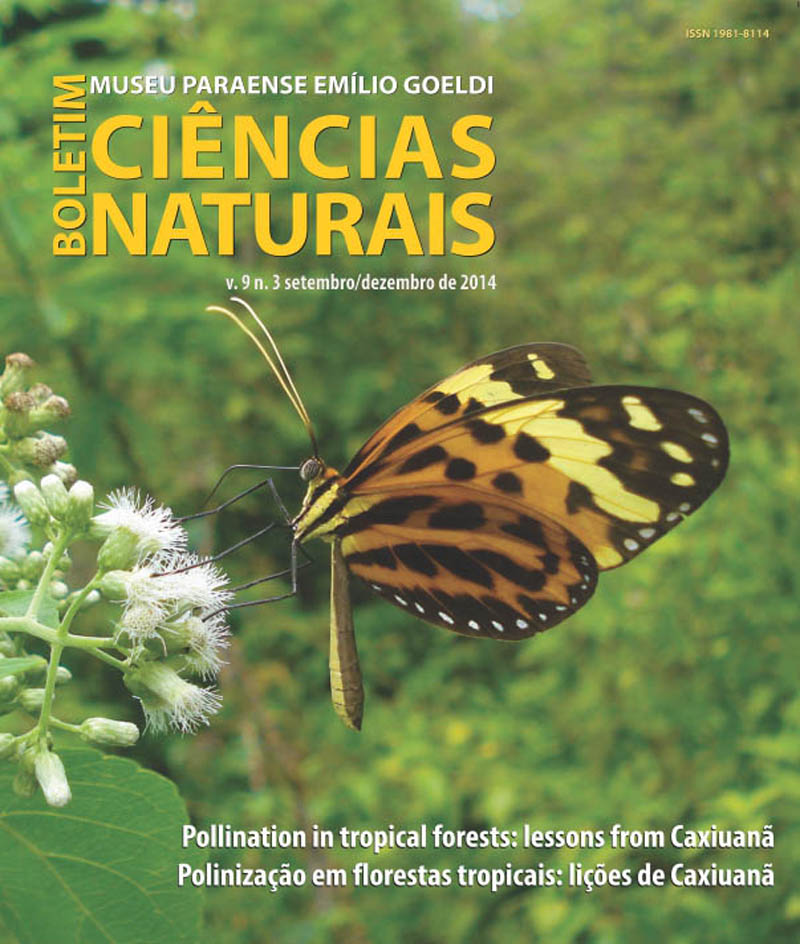Influence of the Legal Reserve on pollination biology of Solanum lycopersicum L. hybrid pizzadoro (Solanaceae)
Keywords:
TesteAbstract
The constant disturbance of habitats has led to the decline of pollinators, which may reflect limitations in the quantity and quality of the fruits and seeds. Studies with agricultural crops and their pollinators may contribute to proposals that combine agriculture and conservation of forest fragments. The aims of this work were: 1) verify if the floral morphology influences the behavior of the pollinator visits; 2) evaluate the richness of pollinating bees and pollinators at different distances from the Legal Reserve area; 3) compare the efficacy of three species of bees in two treatments of pollination: spontaneous self-pollination, and pollination under natural conditions. The study was conducted on conventional tomato cultivation at Estiva Gerbi, São Paulo. Flowers were observed under a stereomicroscope and scanning electron microscope. Efficacy was compared between Apis mellifera, Augochloropsis sp. and Exomalopsis sp. Observations and sampling were made in situ at 50, 100 and 150 meters from the Legal Reserve. It was found that the anther dehiscence is longitudinal and the efficacy of the three species of bees was not different, that is, the number of seeds produced by each flower does not depend on the species of bee that performs the visit to the flower. It is considered that the success of A. mellifera, as pollinator, is associated with the floral morphology. Eleven species of insects were flower visitors, but only seven were considered pollinators. Fifty eight floral visits were recorded, 24 in quadrant A (50 m), 13 in B (100 m) and 21 in C (150 m), and A. mellifera were dominant with 62.1% of visits, followed by Augochloropsis sp. and Oxaea flavescens both with 10.3%, Exomalopsis sp. with 6.9 %, Allograpta
sp. with 5.2 %, Bombus sp. with 3.4 % and Xylocopa sp. 1.7 %. The data indicates that the Legal Reserve played a key role in providing pollinators for tomato crops and therefore emphasizes the need for conservation and restoration of forest fragments to assist in increasing crop production.
Downloads
Published
Issue
Section
License
Publication means fully assigning and transferring all copyrights of the manuscript to the journal. The Liability Statement and
Assignment of Copyrights will be enclosed with the notice of acceptance. All the authors must sign the document and return it to the journal.






